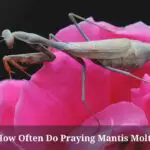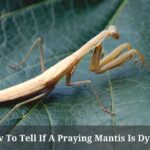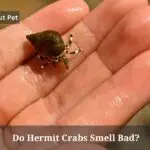It can be very distressing to discover that your praying mantis’ abdomen seems to have burst. Once you make this discovery, you will certainly want to know what would burst a mantis’ abdomen, what is likely to happen and if there is anything you can do to help the mantis. Read on, for answers.
Usually, you will find a praying mantis abdomen burst due to overfeeding. This tends to happen more commonly when the mantises overeat soon after molting (on account of the exoskeleton changes that molting causes), and with certain types of foods such as crickets.
Thus praying mantises are the sorts of insects that may continue eating even after their bellies are full. That can in turn lead to praying mantis abdominal collapse in due course.

Unfortunately, the prognosis for praying mantis injury abdomen burst is not very good. Most praying mantis whose abdomens burst end up dying within a couple of day or so.
Why Would A Praying Mantis Abdomen Burst?
A praying mantis’ abdomen usually bursts due to overfeeding.
Normally, you will start with the typical praying mantis flat abdomen (which indicates that the mantis is hungry). Then, as feeding continues, you start seeing a praying mantis swollen abdomen.
That then progresses to a praying mantis brown abdomen, which looks as it is just about to burst.
In due course, if the mantis continues eating, its stomach bursts open! Then you end up with very sick praying mantises – on account of the burst abdomen injuries.
These incidents of praying mantises’ abdomens bursting due to overeating are more common soon after molting. Molting brings about certain exoskeleton changes.
Thus if a mantis overeats soon after a molt (and before its new exoskeleton has hardened properly), it may end up with a burst stomach. Then you easily find yourself panicking saying ‘Help! My mantis abdomen burst’…
So it is important to appreciate the exoskeleton changes that mantis molting brings about. While trying to figure out why do praying mantis curl their abdomen after molting, you may get insight on that.
All in all if, soon after molting, a mantis overfeeds (before the new exoskeleton hardens), it may end up with a burst abdomen.
The incomplete exoskeleton hardening, combined with overfeeding, would be the ultimate reason behind the praying mantis abdominal rupture during molt.
It is worth mentioning that certain foods tend to be more frequently implicated in cases of burst praying mantis abdomens. For instance, you often find that the mantises with burst abdomens had fed on foods like crickets.
Thus if a praying mantis molted recently, and you proceed to overfeed it on crickets, the risk of abdomen rupture may be higher.
Is It Common For Praying Mantis Abdomens To Burst?
The phenomenon in which we find praying mantis’ abdomens bursting is quite rare. But it is something that nonetheless happens once in a while.
So you may find a pet mantis owner complaining that ‘my praying mantis pet is not eating and has 2 black lines on its abdomen’. Then close examination reveals that it is actually a case of burst mantis abdomen.
In other cases, the telltale sign is that the praying mantis has a strange ooze coming out of her abdomen. Then further investigation reveals that the mantis’ abdomen has actually burst.
Generally, we do once in a while encounter people seeking information on how to identify a praying mantis abdomen rupture. This means that the problem, while rare, does occur once in a while.
If you (unfortunately) find your praying mantis’ abdomen burst, you need to know that it is something that happens to other mantises’ once in a while. It may not be a very common occurrence, but it does occur occasionally.
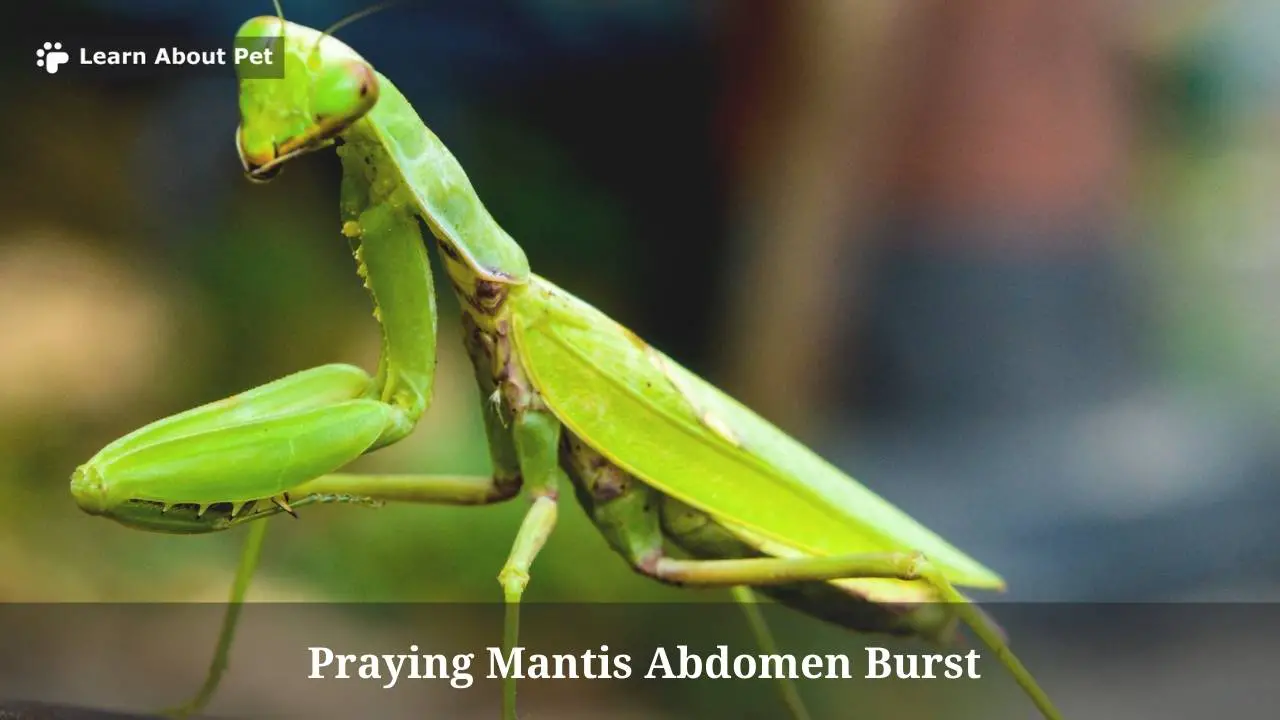
My Praying Mantis Stomach Burst, Should I Be Worried?
If your praying mantis abdomen has truly burst, you have reason to be worried.
As mentioned earlier, the prognosis for burst mantis abdomen injury is not good. Many mantises with this problem tend to die within a couple of days or so.
There is still a chance of your mantis healing and surviving. But the outlook is usually quite pessimistic.
My Praying Mantis Abdomen Has Burst – What To Do?
If your mantis’ abdomen bursts, the focus should be on how to (possibly) save its life.
So, how do you save an injured praying mantis (if the injury is specifically that of a burst abdomen)? Most experts recommend stopping to feed the mantis for a while.
Indeed, whenever you encounter tips on caring for an injured praying mantis (with burst abdomen), the first point tends to be that of suspending feeding for a while.
There are also those who say that applying fingernail hardener on the points of the abdomen that are burst may sometimes help.
Meanwhile, ensure that the mantis is in hygienic conditions, to minimize chances of infection.
Final Verdict – Praying Mantis Abdomen Burst
Praying mantises’ abdomens usually burst due to overfeeding. If a mantis eats beyond a certain limit, its abdomen sometimes just ends up bursting.
The incidents of mantises’ abdomens bursting tend to be more common soon after molting. And they tend to be more common when the mantis overfeed on certain moisture-sapping foods, such as crickets.
Thus, in a nutshell, if a mantis overfeeds on certain foods (such as crickets) soon after molting, there may be a risk of it bursting its abdomen.
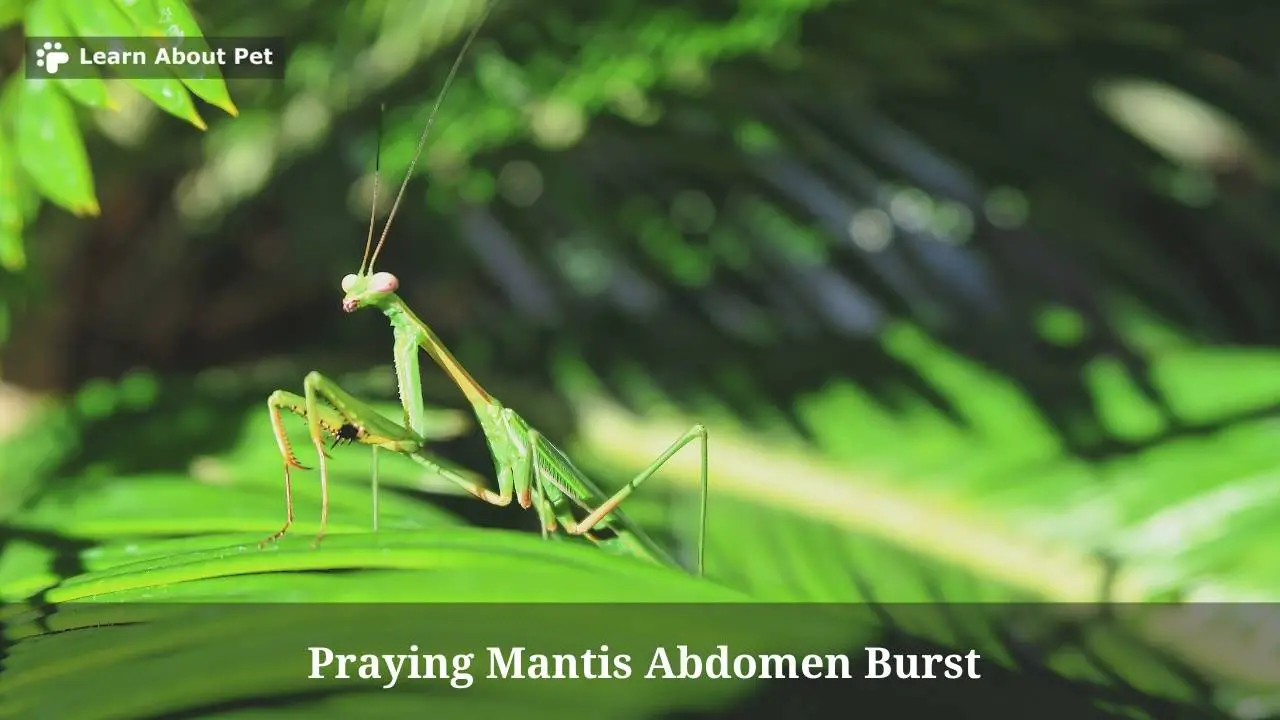
The prognostic outlook for mantises with burst outlook is unfortunately not usually good. Many lose their lives within 1 or 2 days.
You can try to help a mantis with burst stomach by suspending feeding, and perhaps applying fingernail hardener on the burst points of the abdomen.
Ensuring that the mantis is in hygienic conditions may also help in minimizing the possibility of infection.
As a pet lover, make sure to learn about pet more and give your pet mantis a good and comfortable life!

Welcome to Learn About Pet. My name is Rajkumar Ravichandran and I love all pets, travel, and amazing food. I write about my passion and personal experience caring for multiple pets in this blog! ❤️
Post Disclaimer
DISCLAIMER: THIS BLOG OR WEBSITE, "Learn About Pet", DOES NOT PROVIDE YOU WITH MEDICAL ADVICE AND IS NOT A SUBSTITUTE FOR MEDICAL ADVICE. ALWAYS GET IN TOUCH WITH YOUR PERSONAL VETERINARIAN AND USE INFORMATION HERE AS GENERAL ADVICE.
The information, including but not limited to, text, graphics, images and other material contained on this website are for informational purposes only. No material on this site is intended to be a substitute for professional veterinary advice, food recommendation, diagnosis, or treatment. Always seek the advice of your veterinarian or other qualified health care provider with any questions you may have regarding a medical condition or for pet food related questions.



